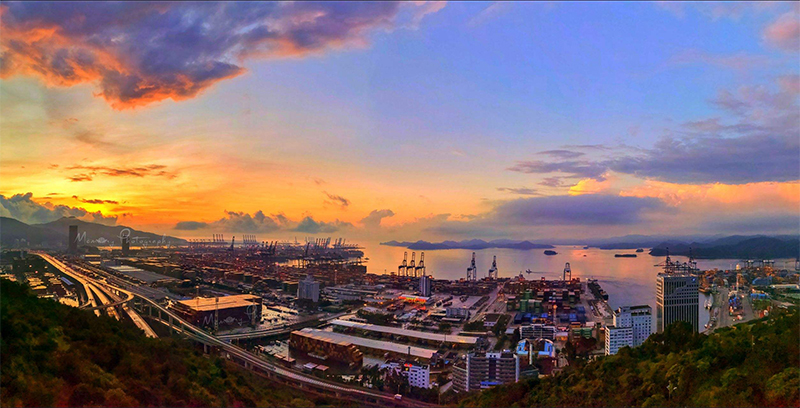Recovery reaches pre-pandemic level
Industrial output was up 5.6% y/y, up 0.8 pps from July, reaching the average growth rate of 2019. We expect growth might slightly exceed the pre-pandemic level for the rest of the year. Investment fell -0.3% y/y January-August, up 1.3 pps from previous months. The driving force is switching from state to private investment, reconfirming the return to pre-pandemic economic recovery.
Consumption was up 0.5% y/y, the first turn to positive growth this year, and up 1.6 pps from July. Exports were up 11.6% y/y, above 10% y/y for two consecutive months. Despite the U.S.-China conflict, exports to the United States grew faster than 20% y/y. Imports fell -0.5% y/y.
CPI growth turned downward in August, and was up 2.4% y/y, falling to the pre-pandemic level. For the next three months, based on the high base numbers of 2019, CPI is expected to fall further. Producer prices continued to rebound. The ex-factory price index of industrial goods fell -2% y/y, and PPI fell -2.5% y/y, up 0.4 and 0.8 pps from July, respectively. But both are still -1.6% and -2.2% y/y lower than in 2019.
The main financial indicators displayed differing patterns in August. M2 was up 10.4% y/y, falling for two consecutive months, and down 0.7 pps from June. M1 rose 8% y/y, up 1.1 pps from July, maintaining its upward trend. The societal financing scale rose 63.1% y/y, mainly driven by large government bond issuance.
The Chinese RMB has strengthened by 2.5% against the dollar in the last four weeks. Cross-border RMB receipts and payments totaled 12.67 trillion yuan, up 36.33% y/y. We expect the RMB will further strengthen in the rest of the year, given the Chinese economy’s much better comeback compared to the United States, the large interest rate differential between the United States and China, and the U.S. dollar flooding into the market. Even though the RMB cannot overtake the dollar in the international market in the near future, the outlook for the RMB is promising.
Recovery slows, but continues
Industrial output rose 4.8% y/y in July, the same rate as in June, down 1.1 pps from Q4 2019. Investment grew 8.3% y/y, up 2.7 pps from June, and up 2.9 pps from Q4, and is still mainly driven by state investment, with a growth rate of 12.7% y/y. The best performer among fixed asset investments is real estate, with a growth rate of 11.6% y/y in July, up 3.7 pps from Q2.
Consumption is still weak, and was down -1.1% y/y, and up 0.7 pps from June, showing customers’ caution over COVID-19. In July, exports grew 10.4% y/y, up 6.1 pps from June, and up 6.4 pps from H2 2019, possibly due to the halt of overseas production. Imports are fluctuating significantly, and aren’t showing any trend. They rose 1.6% y/y, down 4.6 pps from June.
Producer price growth is trending up. The ex-factory price index of industrial goods rose 0.4% m/m and fell -2.4% y/y. PPI rose 0.9% m/m, and fell -3.3% y/y. Growth of the two indices is down 0.6 and 1.1 pps from June. But we expect future producer prices to at most rebound to their pre-pandemic growth rate levels. CPI rose 2.7% y/y, up 0.2 pps from June. We expect its rise to be temporary.
Major financial indicators have been falling, or flat. M2 rose 10.7% y/y, down 0.4 pps from June. Loans rose 13% y/y, down 0.2 pps from the end of June. M1 grew 6.9% y/y, up just slightly, by 0.4 pps.
On August 14th, a pioneering digital currency initiative initiated by the People’s Bank of China stated that that it would expand the trail program to a number of large cities, with the involvement of the big four state banks. China’s Alibaba has already entered into a “strategic partnership” with the Central Bank over the sovereign digital currency plan. We view digital currency reform as part of the Chinese government’s grand Fintech plan. It will make financial transactions easier, by reducing the intermediary role of commercial banks, directly benefiting small and medium-sized firms.










